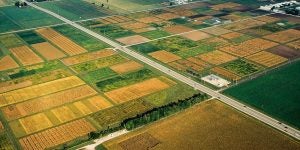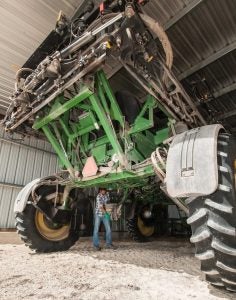My brother is about to wrap up his planting season in Michigan. Whether or not he’ll be successful depends on a variety of factors, but once he sets his mind to something, he usually finds a way to accomplish it. When he drills in those last rows of soybeans, it’ll be the capstone to a weeks-long effort that spanned almost 2,000 acres.
So now what?
I can already hear my friends in animal agriculture taunting us. Don’t you know that crop farmers only work a few weeks a year — half in the spring and half in the fall? The rest of the year they’re sleeping in, making hearty meals, enjoying winter sports, hanging out at the beach, and engaging in frivolous hobbies.
Well, that’s one way of looking at it. But seriously, what do crop farmers do between planting and harvesting? Probably more than you think.
1. Fertilizer applications
It might surprise you, but as soon as my brother parks the soybean drill (and takes a couple days to catch up on sleep), he’ll be right back in the fields. We apply nitrogen to our corn crop, which comprises usually a little more than half of those 2,000 acres. This process takes a few weeks to accomplish, though it has to be done before the corn is too tall. So it’s another season of long days.
2. Other applications
Fertilizer isn’t the only thing we apply to our crops; we also use pesticides. More specifically, we apply herbicides. Ideally, we would do this before we plant. But given our shorter season in Michigan, that often doesn’t happen. So we follow the planter with the sprayer and apply a dose of herbicide for weed control.
Insecticide applications are less common now that we use crops genetically modified to create their own protection. (In fact, we haven’t sprayed insecticides on our farm for over 20 years.) But not all row crops have that option. Soybeans, for example, sometimes have aphids or spider mites that require attention.

3. Farm Service Agency … maps
There comes a time each summer where the house is covered in papers, markers, and highlighters. The papers all depict different fields that my family farms. The maps show the Farm Service Agency where the fields are, how many acres are included, the type of crop planted, and the date planted. FSA uses the information for crop insurance and the U.S. Department of Agriculture’s regular crop reports.
I’ll admit it might just be our house where this process takes an inordinate amount of time. But we also rent land from over 50 different people. We don’t have huge sweeping fields with 100 or more acres. So that means we have a lot of maps. And it takes time to make sure everything is done correctly.
4. Seasonal fruits and vegetables
Believe it or not, not all row-crop farmers only deal in corn and soybeans. For over 25 years, our family also grew an abundance of fruits and vegetables. The seasonal timeline mostly works. The plants get seeded and started in early spring. Then we’d plant corn and soybeans just before the produce was ready. By the end of summer, usually around Labor Day, the fruit and vegetables were ending. So we switched to corn and soybean harvest in the fall. There wasn’t a lot of time off from March through December.

5. Equipment care
The machinery we use isn’t just big and complicated; it’s also expensive. So it’s important to clean and service it between uses. Once we’re done with all of the above, we’ll thoroughly clean it and store it until the next season. It isn’t the type of job that takes weeks, but it does take time and care.
6. Gear up for harvest
Before we know it, harvest is on the horizon. But we can’t just pull the combine out of the barn and start picking corn; it has to be serviced. Combines, tractors, grain cart, augers, and tractor trailers all need attention before harvest can begin. Our harvest equipment, particularly the combine, has a lot of intricate parts. It takes weeks to go through everything and make sure it’s properly working. It still doesn’t mean there won’t be breakdowns, but it does help.
So that’s what crop farmers do during the summer months. It’s true that they don’t work every single day. But during the peak times, the days are usually long and grueling. And there’s still plenty to do during the off times, too.
Amanda Zaluckyj blogs under the name The Farmer’s Daughter USA. Her goal is to promote farmers and tackle the misinformation swirling around the U.S. food industry.



